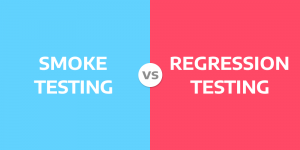
Testing software from end to end can be a challenge, especially when it involves user interaction. However, it is possible to create desirable, efficient, and meticulous test cases. Here, you will learn all you need to know about end-to-end testing and its automation.
The Goal of Testing
Confirming an application’s ease of use and intuitiveness is the primary goal of end-to-end (e2e) testing. The intent is to approximate the manipulations of an average end-user – or, occasionally, a specific end-user – and verify that the program will respond expectedly.
Determining Comprehensiveness
End-to-end testing can thoroughly cover the entire gamut of potential user interaction. Setting up a series of tests to cover it in such detail would result in an excessive quantity of tests that would potentially take much longer to run than the original code took to write.
Realistically, it isn’t necessary to test every possibility. However, choosing which to test can seem arbitrary. Typical Quality Assurance departments may suggest some aspects, but unless they are using the program in a real-life application, it is unlikely that they understand just how it is being applied.
Getting the actual usage from end-users will provide the best idea of how comprehensive the testing should be. Analytics and test creation software that captures real-world operations are the best ways to gather this information.
Targeting Defects
Developers should be running general logic tests that verify the proper results from the code. The e2e testing complements the logic and API tests by verifying user interaction, following workflow successfully. It certifies that each button, field, page, etc., is where it should be and responds correctly and that the result is expected.
End-to-end testing should include elements, data, and errors in the browser or Javascript. All related functionality will then be automatically included in the test.
Following Function
An excessive set of tests – a test suite – has many downsides, including taking too long to run efficiently and costing too much to maintain. Streamlining the test suite allows it to run in a reasonable time frame. The reduced time requirement allows testing of each build to prevent bugs from gaining a foothold.
Keeping the test suite optimized is aided by dividing test cases by use. The more commonly used features should be in one group. These features will cause many headaches if they become unavailable for any reason. The other group will contain test cases relating to the less foreseeable uses that happen less often but can still cause serious problems in the case of failure.
It isn’t necessary to include every uncommon use. Analytics will indicate which less common situations occur often enough to require inclusion in an end to end testing scenario. Ideally, both feature groups should be tested with every build. If time does not permit testing both, the group of common features should be the priority. Bugs need to be squashed as quickly as possible, and regular feedback will help to accomplish this.
Selecting Testers
While some may assume that the Quality Assurance department is responsible for all testing and verification processes, it makes little sense for e2e testing. The developers are better equipped to manage this part of the quality control. The developers then have extra motivation to ensure the code is completed skillfully.
However, while developers are very good at testing their code, they may not be clear on the usage in the field by the clients and end-users. It’s the end-user who knows the most about what functionality should be tested regularly for effectiveness. The end-user knows only their individual use of the program, however. Without knowledge of the program code, the ability to test is limited.
Therefore, creating a useful and appropriately comprehensive end-to-end test is best done by a group formed for that purpose. The group can focus solely on the testing and develop the necessary test suite to cover all common features. They can also work with the end-user to develop additional tests based on the user’s experiences.
Developing Test Cases
The user experience with the software needs to be rich and positive. The goal of the test should be to prove that an end-user will be satisfied with the completion of the task.
Test cases should validate interactions with some part of the interface. They should verify the responses from the application and ensure any changes in the data happen appropriately and as expected. A test case will step through each part of the user interaction. A proper example of end to end testing begins with opening the application or browser and ends after completing the task. Even simple tasks will generally include seven or more steps.
No-code testing is one way to get valuable input from the end-user, simply from capturing actual usage. This tool captures all steps to complete a task. After postconditions are added, the test case is saved for use. Executing the test will verify that the postconditions are met.
Automating End-to-End Testing
Because manual testing can be lengthy, it’s essential to automate it. Basic tests for user registration, login, and purchases will verify that the new code has not broken the old.
Test automation tools are widely available, and companies can easily integrate one of these tools into their automated processes.
Conclusion
Creating reliable automated tests will take time, especially if the tests fail for no apparent reason. Take notes to document where and when cases fail, as awareness often leads to discovering a pattern that will aid in test reliability.
Once the automated tests are running, looking deeper can often result in finding more potential improvements or problem areas, which can then be tested and adjusted. End-to-end testing involves a fair amount of time and energy, but the result is well worth the time invested.






